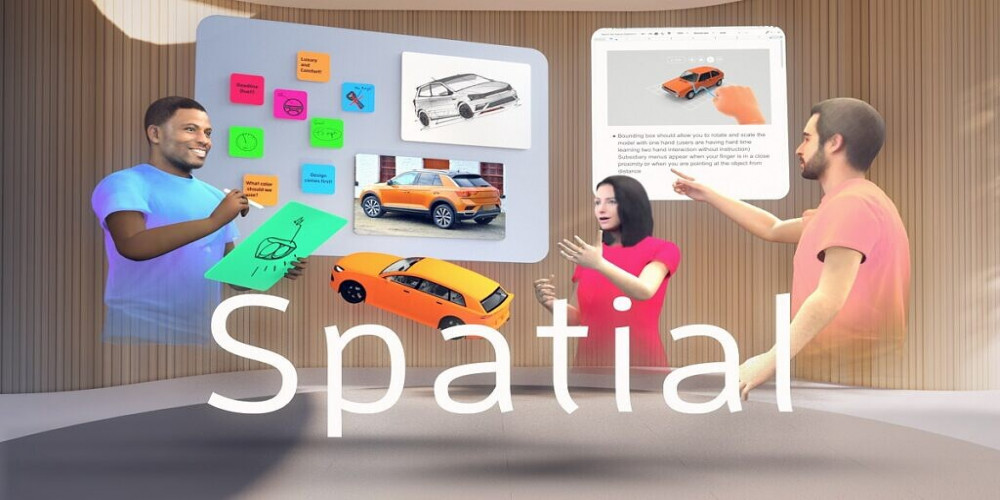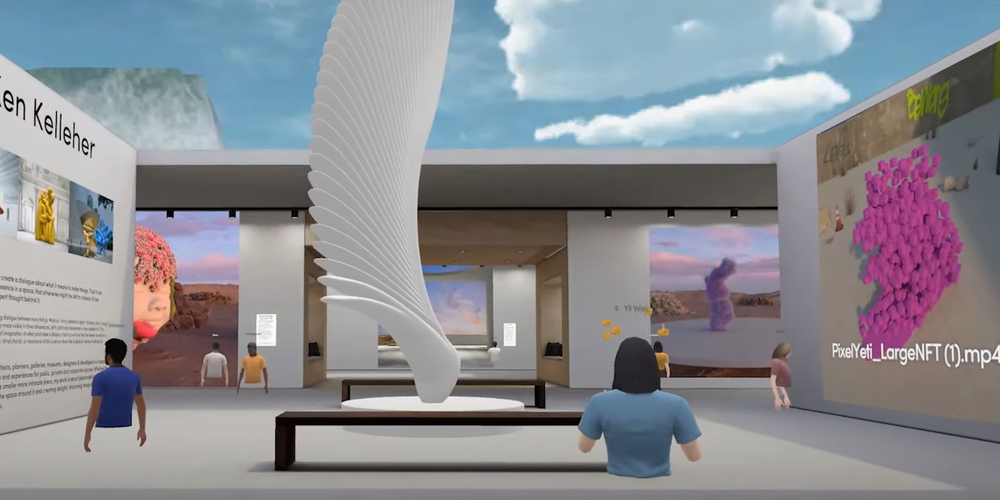The New VR Meeting Room: Introduction to Spatial
- 2020-05-13 16:20

The new app Spatial can provide the best virtual meeting experience ever possible now. All it takes is a virtual reality headset and a virtual room to place real people in. Meet Spatial, the new generation virtual workspace.
The most visible advantage of this technology is psychological. With it, you can recreate the familiar environment in the office you used to hold your meetings before the pandemic. Or create a brand new place, with exotic landscapes outside your windows and birds singing in the background. Or create virtual illustrations for the topic of your meeting. And so on.
But the real advantage of virtual presentation is integrating any possible documents, presentations, 3D models, and other objects that can be seen by anyone, turned any way, scaled reasonably and shared limitlessly. Spatial is all that.
What’s Spatial?
Spatial app is a VR-based room for meetings. It takes an Oculus Quest app (and the headset itself) to participate. Starting the meeting is possible with a subscription. Among all the apps for VR, it seems the most revolutionary for now.
It’s easy to recognize participants not only by their voices but by their looks as well. The animated models are based on real human faces. Though they look a bit cartoony in the virtual room, the overall experience is quite natural. You can move around the room, touch other guests virtually, and all these actions will be interpreted right.
What Spatial Supports?

All that would have been just a toy without a set of tools necessary for a work environment. And there are some.
-
Show your presentation materials on virtual screens. They can be zoomed in and out and turned so everyone in the room can see the content. The content can be zoomed or scaled as well.
-
Import documents and share them with participants. Spatial supports Microsoft Office and other popular standards.
-
Scribble your ideas. Virtual boards and sticky notes let you write by hand, and everyone will see your note if you expose it.
-
Use an Internet search. Major search systems are available from within Spatial. The results are visualized in such a way that everyone can see what you have found.
-
Share your screen with any application or web page running. They will see a large screen where you conduct your demonstration.
-
Upload 2D and 3D models to make them present in the room. Then you can drag and drop, scale and turn these objects with your hands.
Spatial without Oculus Quest
Can one use Spatial without the headset it’s developed for? In fact, yes. One can participate with a 2D tool, like a PC or a mobile device. Whatever you choose, it’s necessary to have a cam on it. Then the screen will show the environment and the participants through a virtual camera. Of course, the experience is cut, but it’s better than nothing. The other participants will see you on a floating screen.
AR devices, like Microsoft HoloLens, or MagicLeap, are also supported. The experience will differ from full-fledged VR: you’ll rather see other participants and the objects they deliver in your real environment. And it will take some effort to make it look decent, but it’s worth a try.
It’s not sure yet whether Spatial will make a Gear VR app, as well as one for headsets by HTC or Steam. Gee, it would have been great to have Spatial for PS VR! That would be the ultimate explanation why PlayStation is, in fact, a tool for work! Probably it will be one day if the idea itself is fruitful enough. So far, to enjoy it in full effect, you’ll have to buy Oculus Quest – or rather wait until your office buys a bunch for the staff, as this may turn out quite a luxury for non-gamers.
The Next Zoom?
Do you believe Spatial makes way for the new virtual meetings? Will they benefit from going VR, or are you good with standard video conferences? Do you consider getting yourself an Oculus Quest, since it’s capable of delivering this? Share your thoughts in a comment, if you please.





